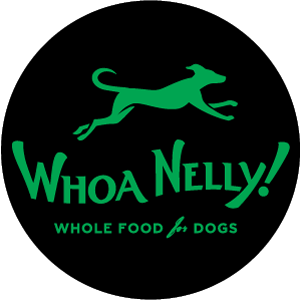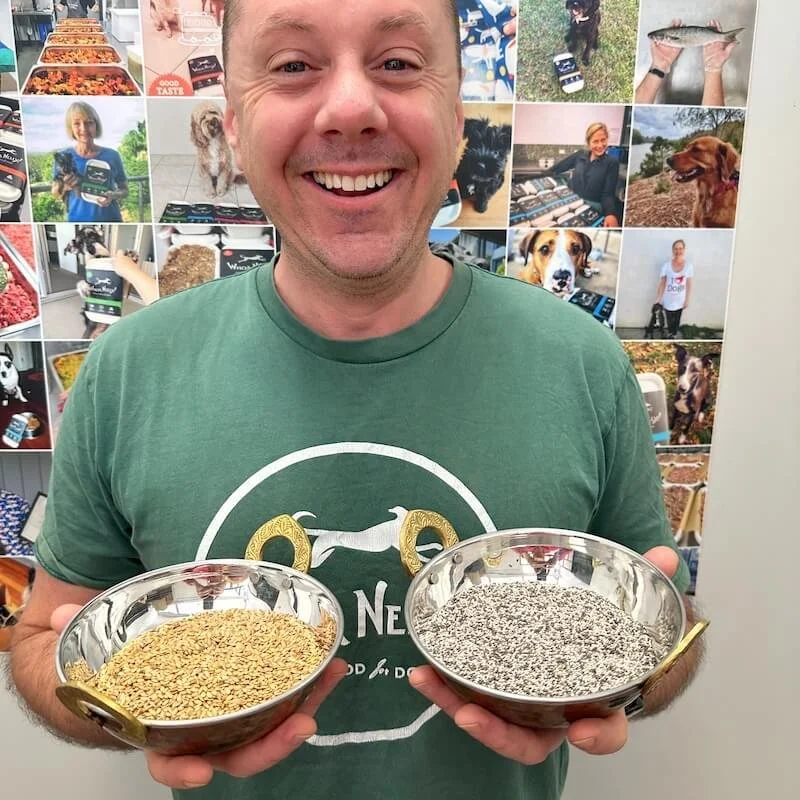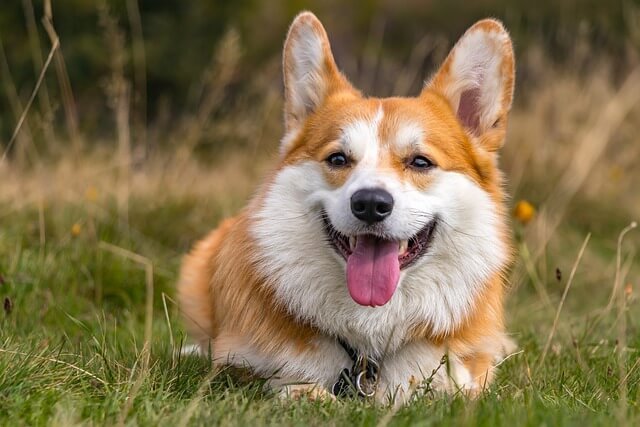How To Balance Fats In Your Dogs Diet
In This Article
One of the most common ways to balance fats in your dogs diet is to add flaxseed or chia. These seeds are fantastic sources of omega-3 fatty acids so they are a great way to add “good fats” to your dogs diet.
Flax (sometimes called linseed) and chia are rich in fibre, antioxidants and omega-3 fatty acids. They have some differences too. Flax has slightly more omega-3, while chia has more soluble fibre which absorbs liquid and creates a jelly like consistency.
When balanced with other fats these seeds help support digestive health, reduce inflammation and give your dog a lovely shiny coat. Getting the fat balance just right is a big part of why I think our food has such a positive impact on dogs. Healthy dogs eat healthy fats!
What is fat balance?
There are several types of fats. Fat balance refers to the relationship between the main two categories: omega-3 and omega-6. You’ve might have heard of it described as the Ω3 : Ω6 ratio, which describes the basic balance.
We’re aiming for a Ω3 : Ω6 ratio of around 1:3.
That is: one part omega-3 for every 3 parts omega-6.
So for example:
A diet that is made with just beef, chicken and veggies has a Ω3 : Ω6 of roughly 1 : 15. This is wildly out of balance, and likely to cause inflammation and health problems over time. Simply adding one teaspoon of ground flax fixes this by bringing the ratio down to 1 : 3.6.
But please note!
Just looking at ratio by itself can be a bit misleading. There is more to fat balance than just looking at the ratio by itself. The overall amounts of the multiple fats that make up omega-3 and omega-6 are also important.
For this reason your dogs diet needs to have omega-3 from animal, plant and fish sources if it is to be optimally balanced. Otherwise it will very likely be missing key fats.
These fats need to be in the right amounts as well. This includes omega-6, which is why we put sunflower seeds in our Buffalo & Fish recipe. We use it to balance the abundance omega-3 from the fish. Balance goes both ways.
How to balance the fats
If you are feeding our Whoa Nelly! raw dog food, then of course we have you covered. There’s no need to add anything (unless you want to). We use organic flax and organic chia in our recipes as a plant source of omega-3 to achieve the ideal 1 : 3 fat balance.
If you are feeding something else that has not been balanced, then have a look at the ingredients list of your dogs dinner. If it contains beef and/or chicken then adding flax or chia probably makes sense.
Before feeding flax it needs to be freshly ground. A spice or coffee grinder is the best way to grind them up as they need to be quite fine. Chia does not need to be ground, it’s good to use just how it comes.
The amount required really depends on the other ingredients in the diet. It’s impossible to give an accurate feeding amount without calculating the total fats being fed, so keep in mind this is just a rough guide.
How much to feed
1/4 tsp of flax
or 1/3 tsp chia
per 5kg of bodyweight, per day
Eg. 10kg dog: 1/2tsp of flax or 2/3 tsp chia each day.
This is assuming there are no other sources of omega-3 in the diet. If the food is already balanced then adding extra omega-3 sources may be excessive.
Don’t forget fish!
Also check to see if your dogs food contains fish. Fish is a great source of EPA and DHA fats which are not found in plant sources. While your dog is able to synthesis EPA and DHA from ALA, it is only in limited amounts so it really is better that it is in the diet from fish.
It’s always best to feed fish as a whole food, rather than an extracted oil as these oxidise quickly. If you do feed a fish oil make sure they are in a small bottle that you go through in under a few weeks.
And the best way to add it? Fresh salmon, tinned mackerel or sardines (in water, not oil) are all amazing choices. More info here.



